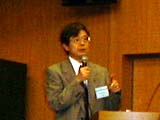Using the repeated coronary occlusion model, we investigated
the effect of heparin treatment on collateral development. In eight control
dogs, 2 min coronary occlusions were repeated 129±44 times until acute
occlusion was no longer accompanied by a reduction in systolic shortening
of the ischemic area. In a further eight dogs pre-treated with heparin,
however, only 81±33 occlusions were necessary to produce the same results.
These findings indicate that heparin has the potential to accelerate and
potentiate collateral development in vivo.
Ten patients with coronary artery disease and effort angina were exercised
10 to 20 min following pre-treatment with a single intravenous dose of
heparin (5000 units) twice a day for 10 days. The rate-pressure product
at the onset of 0.1 mV ST depression and anginal pain increased by 19%
and 35%, respectively. The angiographic collateral score also increased
in these patients. In contrast, none of these indexes changed significantly
in patients with exercise alone.
In a subsequent randomized study, 52 patients with effort angina were
randomly assigned to receive one of two intravenous doses of enoxaparin
(40 mg or 60 mg) or a placebo. Each patient underwent 20 treadmill exercise
sessions 10 to 20 min following pre-treatment with enoxaparin or a placebo.
Only in patients who received 60 mg enoxaparin pretreatment, did the rate-pressure
product at the onset of angina increase significantly, by 16%. The extent
of angiographically demonstrable collateral circulation to the area perfused
by the completely obstructed coronary artery increased in 47% of the enoxaparin-treated
patients, but only in 25% of the placebo patients. These findings are
compatible with a hypothesis that a combination of exercise and enoxaparin
induces collateral growth to the jeopardized myocardium.
The clarification of the precise mechanisms of the interaction of angiogenic
growth factors with heparin would provide a new therapeutic strategy for
coronary artery disease.
|
![]()

![]()
![]()